The Supermicro X12SDV-16C-SPT8F was one of the first Intel Ice Lake-D platforms that we looked at. We now have our formal review of this compact motherboard that packs a 16-core CPU which is a high-end solution in this space. It also has eight network ports, including 1GbE, 10GbE, and 25GbE. Also new for this generation is PCIe Gen4. This is a high-end embedded platform, and in our review, we are going to see why and what the features are that differentiate it from the previous generations that we have reviewed.
Supermicro X12SDV-16C-SPT8F Overview
The motherboard is an interesting shape to say the least. It is listed as a mATX motherboard at 7.5″ x 8.5″ (191mm x 216mm.) This may seem strange since the standard mATX is 9.6″ x 9.6″ and mITX is 6.7″ x 6.7″.
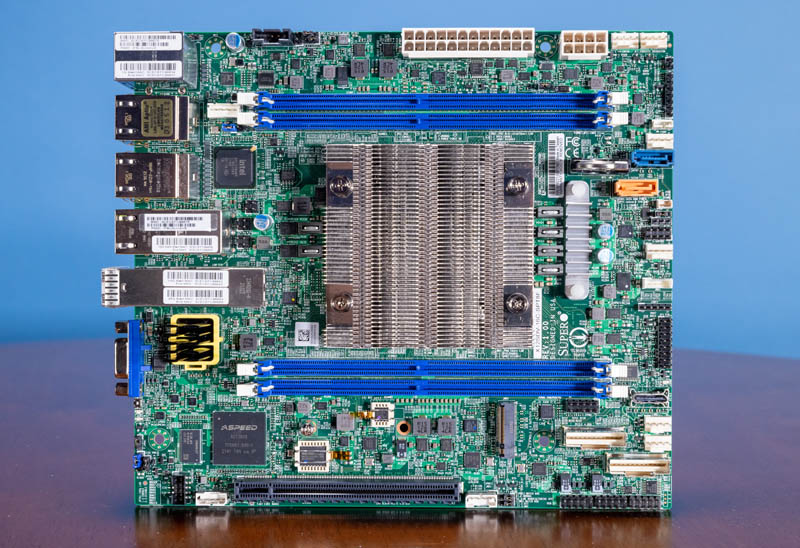
This smaller form factor allows Supermicro to use standard mounting holes, but also to fit in in shorter depth 1U chassis. Here is an example in a 1U chassis with this motherboard configured.
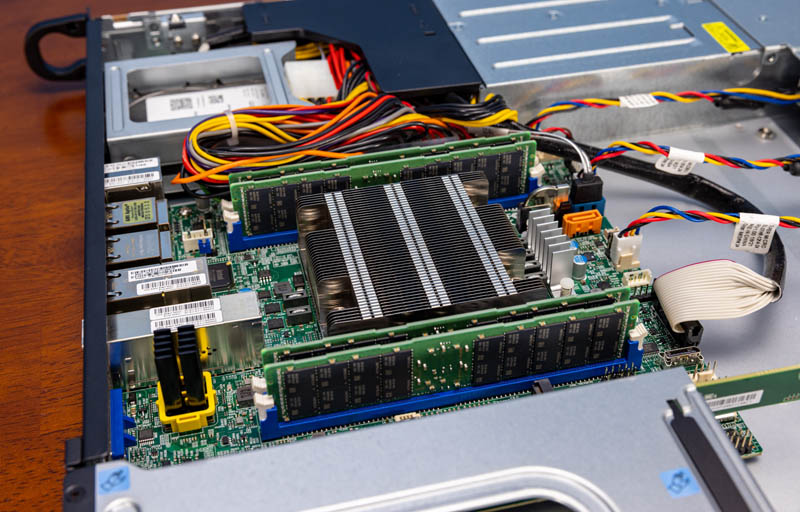
Here one can see that the shorter 7.5″ side is designed to allow a PCIe card on a riser in this system.
Perhaps the biggest feature of this motherboard is the CPU. Onboard we have an Intel Xeon D-2775TE 16 core / 32 thread processor.
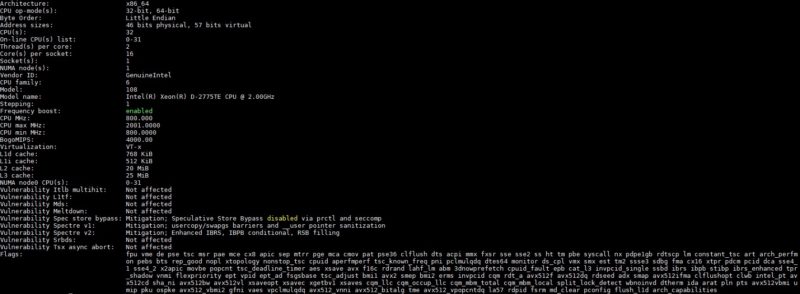
The Xeon D-2775TE is part of the Intel Ice Lake D series. Welcome to the Intel Ice Lake D Era with the Xeon D-2700 and D-1700 series. We did a large piece on this a few months ago. Here is the accompanying video:
This CPU is flanked by four DIMM slots. These are DDR4-2933 slots and the chip itself is capable of four-channel memory. It also supports ECC RDIMMs and LRDIMMs that we expect will be used in most applications.
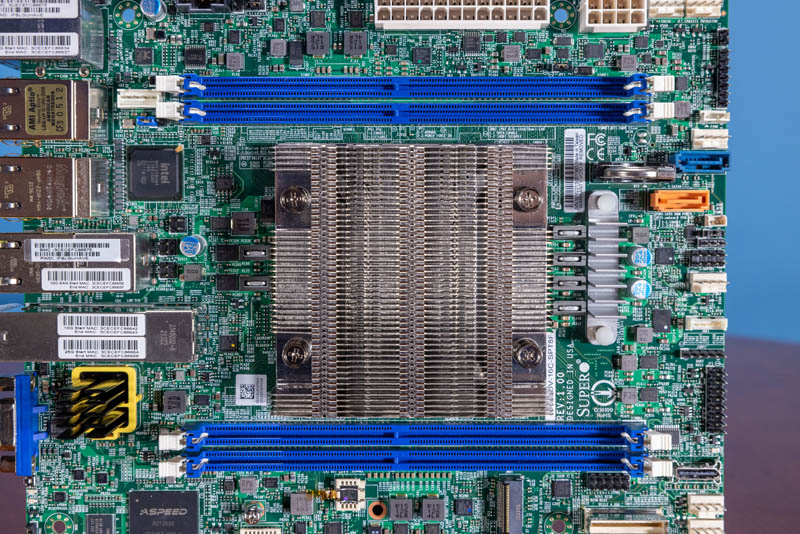
Along the top of the motherboard, we get power connectors. Something that is surprising in this is the number of 4-pin PWM fan headers. Just in this photo, there are four. Supermicro builds this motherboard for chassis with active airflow.
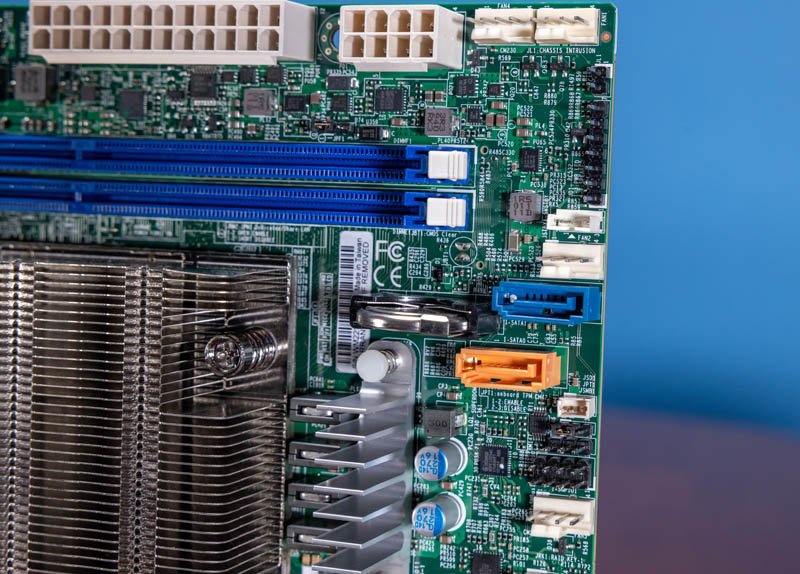
Something that is important for this generation is that the SATA ports are starting to become a smaller point of emphasis. We only get two 7-pin SATA ports, one of them gold for powering SATADOMs. With M.2, SATADOMs have become less popular.
Given the Intel Ice Lake D being used is a 100W TDP part, it means that the heatsink is larger than what we saw in the Supermicro X11SDV-16C-TP8F and Supermicro X10SDV-7TP8F generations. Although there is no fan on the motherboard, this is not a fan-less design. It is designed to be used with chassis fans cooling the CPU and other components.
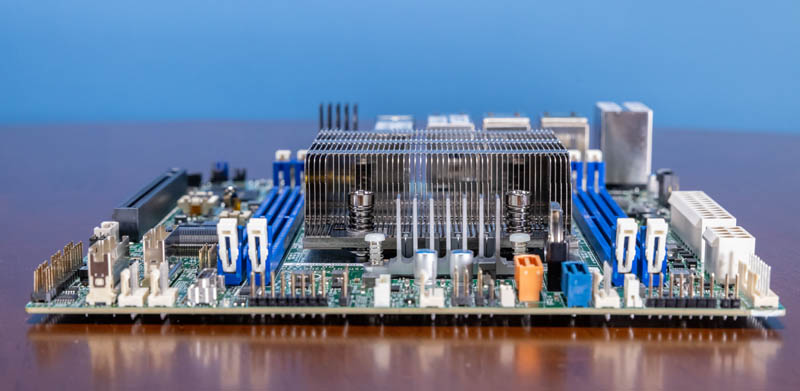
With this generation, we get the ASPEED AST2600 BMC which is new in this generation.
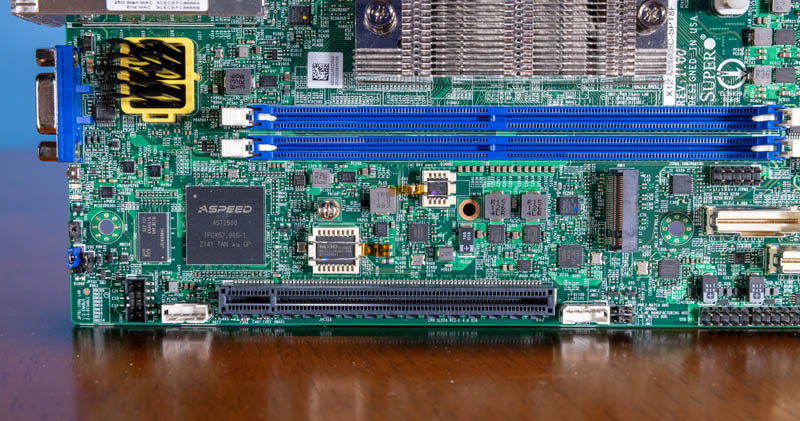
Perhaps the biggest feature of this is the new PCIe Gen4 support. That is new for the Xeon D line in this generation. We get a PCIe Gen4 x16 slot along the bottom edge of this motherboard. There is also a M.2 PCIe Gen3 x4 slot.
While that is solid connectivity for a small platform, we also get two SlimSAS 8-lane ports for more connectivity. We can see these being used for NVMe SSDs as an example.
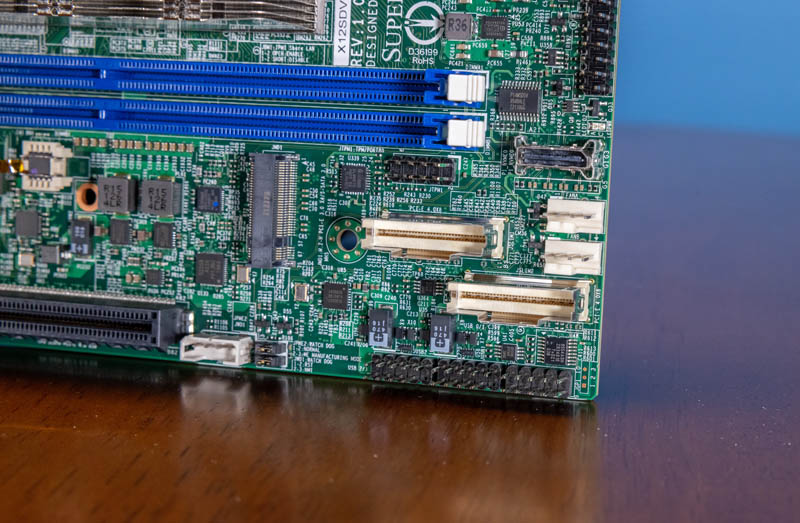
There is also an Oculink 4-lane connector that provides PCIe Gen3 x4 or 4x SATA III lanes.
The rear IO is perhaps the star of this system. There is the out-of-band management port, two USB 3 Type-A ports and a VGA port for standard connectivity. Then there are eight network ports.
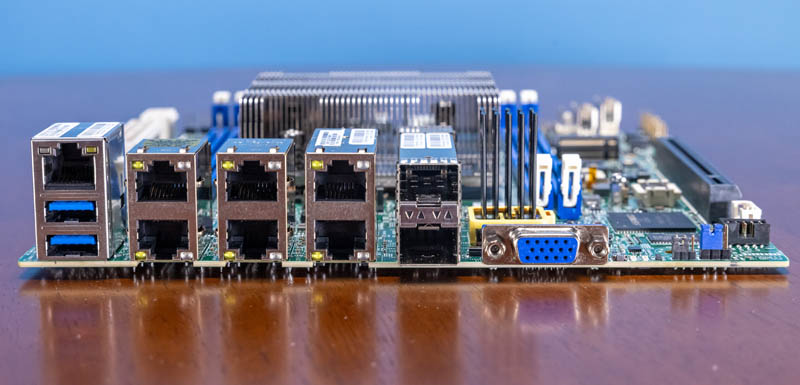
On the leftmost side we have SFP28 cages for dual 25GbE connectivity. Next to those, we have Intel X550-at2 powered 10Gbase-T ports. So one gets high-speed fiber/ DAC connectivity as well as 10GbE via standard RJ45.
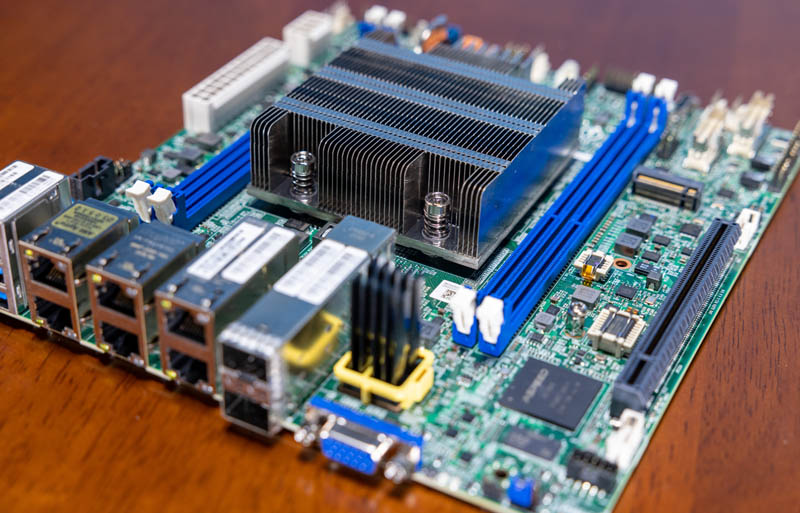
The other four ports are powered by an Intel i350-am4. This is a higher-end 1GbE NIC and is basically the standard in 4x 1GbE connectivity today. Some boards will use 4x Intel i210 1GbE NICs, but the i350 is a costlier solution with more features.
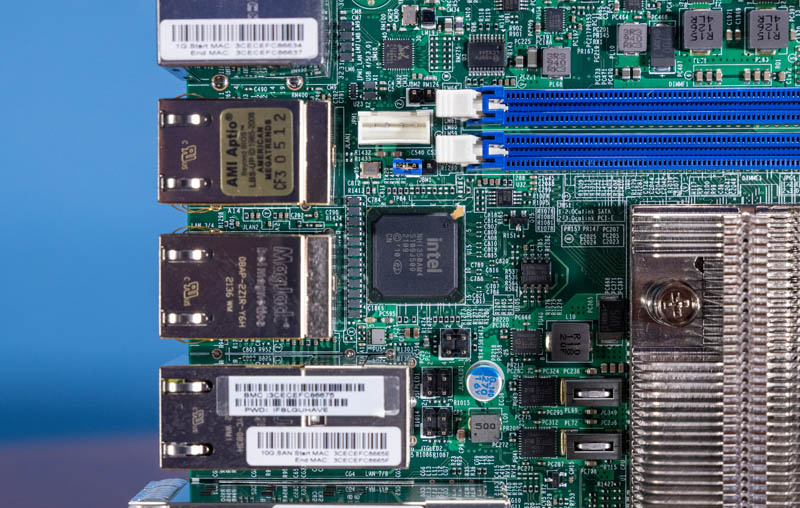
Overall, this is a really unique platform from how much power it packs into a mATX-ish motherboard as well as how much connectivity is onboard. This is a large generational leap.
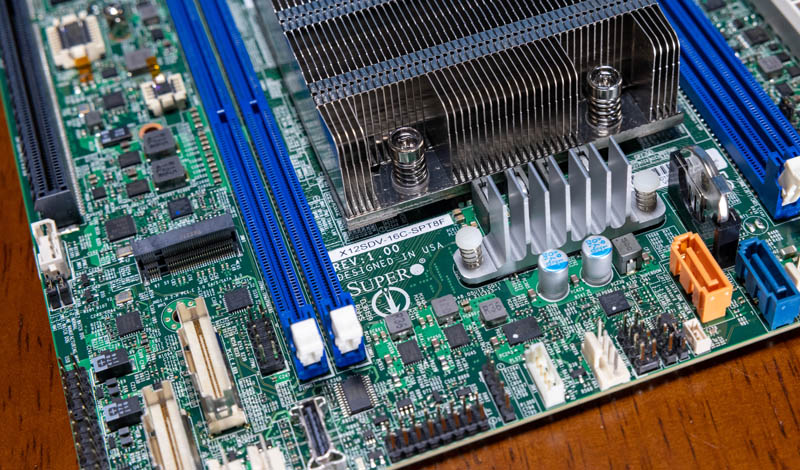
Next, let us get to the topology, management, and performance.

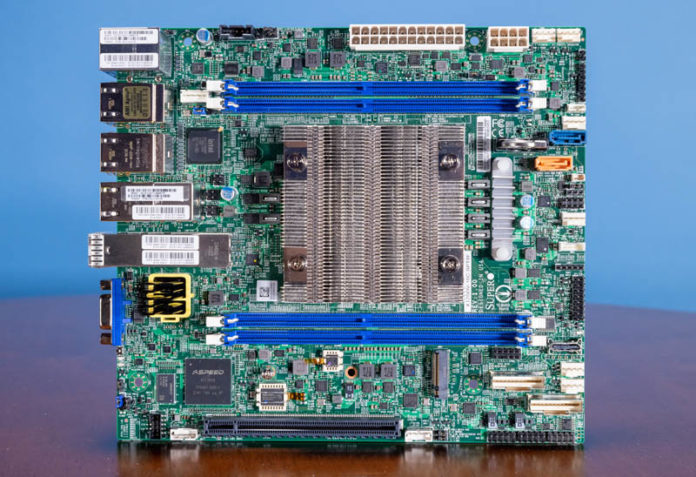
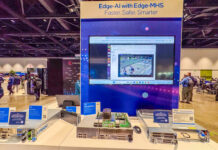
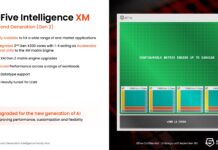
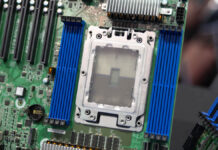
Ah, we will have exciting homelab performance 5-6 years down the road :)
Are those boards even available? Since the launch this April Xeon-D 1/27xx was pretty much nonexistent.
What’s the purpose of such boards? Building a router / firewall which consumes >100W?!
Edge compute. Websites doing processing before it gets to the database. Though I run a whole site on an older D-1521, you could do it on one of these with the right storage mix.
OVH has a bunch of this kind of server, though they build them into stacks rather than chassis. Pile them high, lease them cheapish.
Its very nice. I’m impressed by all of the onboard network adapters.
I wonder why the occulink and M.2 are PCIe Gen3 instead of Gen4. Is it because those go through the PCH?
The new IPMI user interface is pretty cool too
I hope there will be a compatible active cooler especially too for the Xeon D-1700 series. If the X11SDV-8C+ heatsink/cpu-cooler will fit? We will find it out sooner or later…
“dreams about a small NAS with a mirror of 7,68tb-15,3tb pcie gen4 nvme drives and 25gbe”